- Back to Home »
- AMAZING Design , Architectural DESIGN »
- Human Made Architectural Wonders of the Ancient World
Posted by : Anand
July 4, 2013
Chand Baori, India
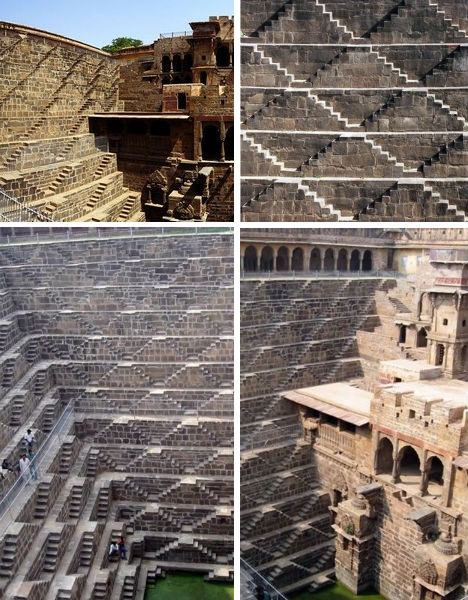
(images via: moolf)
Perhaps one of the most beautiful examples of patterns in architecture, the 10th century Chand Baori well in the Indian state of Rajasthan is the world’s deepest, extending 100 feet below the surface of the earth. Built as a solution to chronic water supply issues in this arid region, the well has a total of 3,500 steps in 13 levels arranged in an inverted ‘V’ shape and is adjacent to the Harshat Mata temple. The walls are so steep that when standing at the bottom, you sometimes can’t see people who are on the steps above you.It’s difficult to imagine the construction process for such a complex stone structure with the technology available at the time. Local legend has it that ghosts built it in a single night; perhaps that accounts for its preternaturally preserved state as well.
Sacsayhuaman, Peru
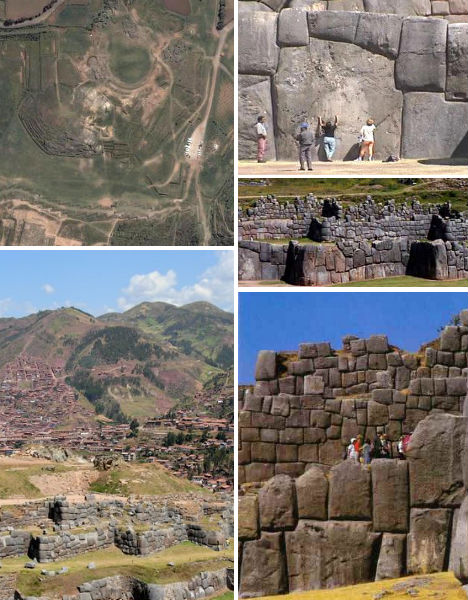
(images via: world-mysteries)
How did the Incas move these massive stones? That’s just one of the mysteries surrounding Sacsayhuaman, an immense fortress located on the outskirts of the city of Cusco in Peru. While the much more famous Machu Picchu is renowned for its views, Sacsayhuaman is a marvel of engineering, confounding Spanish conquerors who were so amazed by the construction, they thought it must be the work of demons.The largest of the boulders that make up the three dry stone walls of Sacsayhuaman – all carried from a quarry located over three kilometers away – weighs an estimated 120 tons. But the seemingly superhuman feat of moving these boulders is not the most incredible aspect of the ruins: even thousands of years later, the stones of the walls fit together with such precision, you can’t fit a piece of paper between them. This precision, along with the various stone shapes that fit together like a puzzle, is likely the reason that the structure has survived earthquakes that have devastated the area.
Leshan Giant Buddha, China
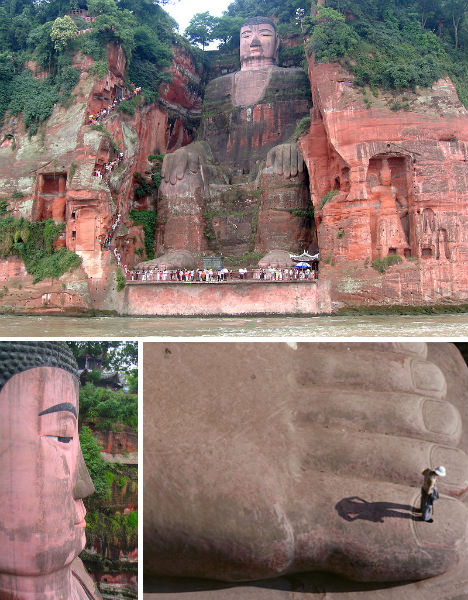
(images via: wikimedia commons, national geographic)
The largest carved stone Buddha in the world towers over 232 feet into the air, with fingers measuring 11 feet in length and 92-foot-long shoulders big enough to be basketball courts. Leshan Giant Buddha overlooks the confluence of three rivers in the Sichuan Province of China. Begun during the Tang Dynasty in the year 713, the Buddha was built at the behest of a monk called Hai Tong who hoped to supplicate the temperamental water spirits thought to be responsible for numerous boat accidents. It took thousands of workers more than 90 years to complete the project.Seemingly cosmetic details are even more complex and meaningful than they look upon first glance. For example, the 1,021 buns in the Buddha’s coiled hair are part of drainage system that continues behind the ears, in the clothing and along the limbs, protecting the statue from water-related damage.
Teotihuacan, Mexico
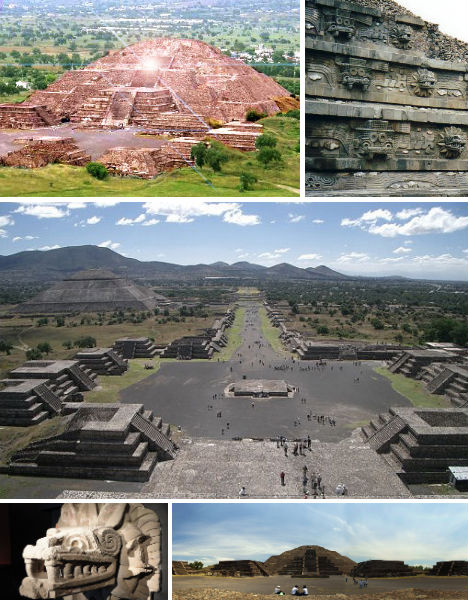
(images via: travel this world)
A massive urban complex laid out to celestial, geographic and geodetic alignments, the Teotihuacan archaeological site in the Basin of Mexico contains some of the largest pyramidal structures built in the pre-Columbian Americas. The city was established around 100 BCE and may have had as many as 200,000 inhabitants during its prime in 450 CE. It has been called the first true urban center in the Americas; its remains measure at least two miles across but the city was likely much larger and its influence extended as far away as Guatemala. Very little is known of the Teotihuacan people or what may have caused the city’s decline, which occurred in the 8th or 9th century.An astronomer-anthropologist named Anthony Aveni discovered that the grid of the city was based on a point of prime astronomical significance. The builders seem to have aligned the east-west axis of the city to the point on the horizon at which the sun sets on August 12th, the anniversary of the beginning of the current Mesoamerican calender cycle.
Strangely, thick sheets of shimmery mica were found within the tiers of the Pyramid of the Sun. Hidden between layers of stone, the mica clearly wasn’t decorative; today it is used as an insulator in electronics but it seems unlikely that these ancient people understood such properties. Furthermore, the particular type of mica used in the complex was reportedly traced to Brazil, nearly 2000 miles away. The Pyramid of the Sun has never been fully excavated.
Underground Churches of Lalibela, Ethiopia
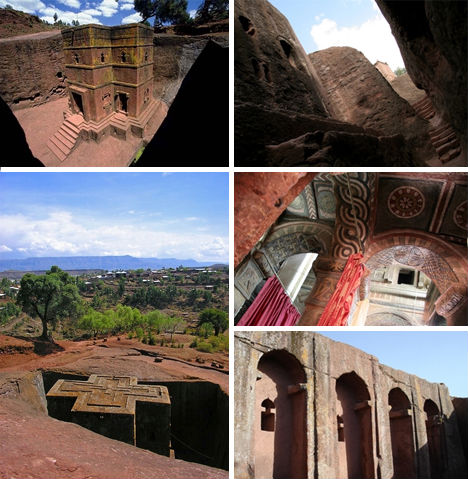
(images via: wikimedia commons)
The tiny town of Lalibela, one of Ethiopia’s holiest cities, is home to 11 monolithic churches– all carved from the same block of red volcanic rock, with their roofs at ground level. Likely built during the 12th and 13th centuries, the rock-hewn churches include four that are fully free-standing, with the rest either partially attached at the sides to the rock or with ‘liberated’ facades. They’re connected to each other with a maze of underground tunnels, and their construction was engineered to take advantage of natural aquifers deep in the ground.El Mirador, Guatemala
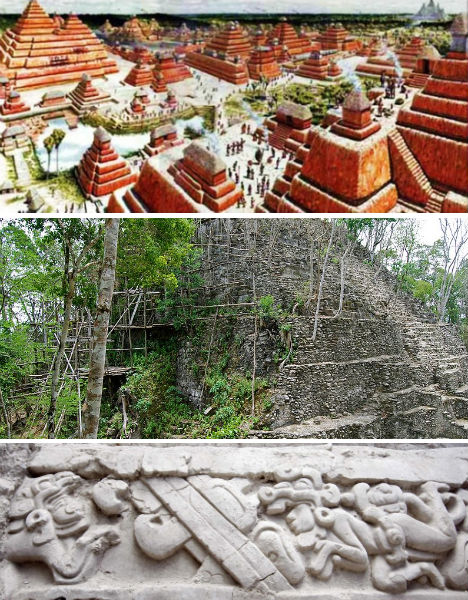
(images via: authentic maya, wikimedia commons, the history blog)
The 500,000-acre site of El Mirador in Guatemala is referred to as ‘the cradle of Maya civilization’ and contains not only five Preclassic Maya cities that pre-date the far more famous Tikal by at least 1,000 years, but also the world’s largest pyramid by volume and the remains of the world’s first highway system.A remote site located deep in the jungle, El Mirador was’t ‘discovered’ until 1926, and wasn’t mapped until 1978. The civic center of the site measures about 10 square miles and contains around 35 ‘triadic’ structures, with ‘La Danta’ being the most notable at 230 feet tall. Its volume, 2,800,000 cubic meters, rivals that of far more well-known ancient pyramids around the world including those in Egypt. El Mirador is also home to a complex network of large roads, which once linked important architectural compounds and nearby cities.
The 500,000-acre site of El Mirador is threatened by looters, drug traffickers and deforestation, prompting the creation of a 810,000-acre national park in the region, which is currently being established by the Global Heritage Fund and the Guatemalan and U.S. governments.
The Lost City of Mohenjo-Daro, Pakistan
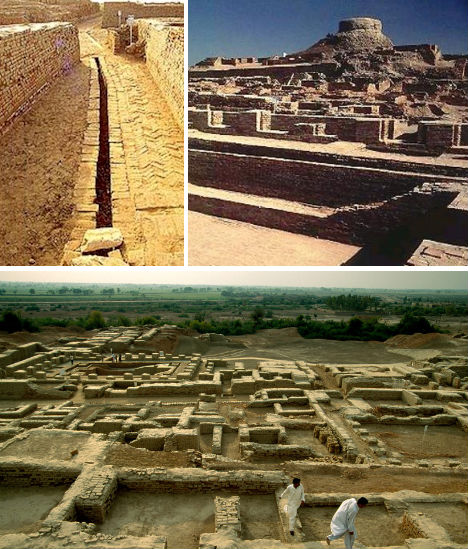
(images via: wikimedia commons, abbas, national geographic)
4,500 years ago, Mohenjo-Daro was one of the largest early urban settlements in the world. It thrived for over a thousand years, but was completely forgotten until excavation revealed its ruins along the Indus River floodplain of what is now Pakistan in 1921. Abandoned around 1500 BCE for reasons unknown, Mohenjo-Daro has a planned layout based on a street grid of buildings made of mortared brick and likely housed around 35,000 residents.Among many interesting features, what stands out the most about Mohenjo-Daro is plumbing and sewage system that was more sophisticated than what most Western households had until the 20th century. Not only did some home have indoor toilets, but there were actually sewage drains that ran below the streets.













Post a Comment